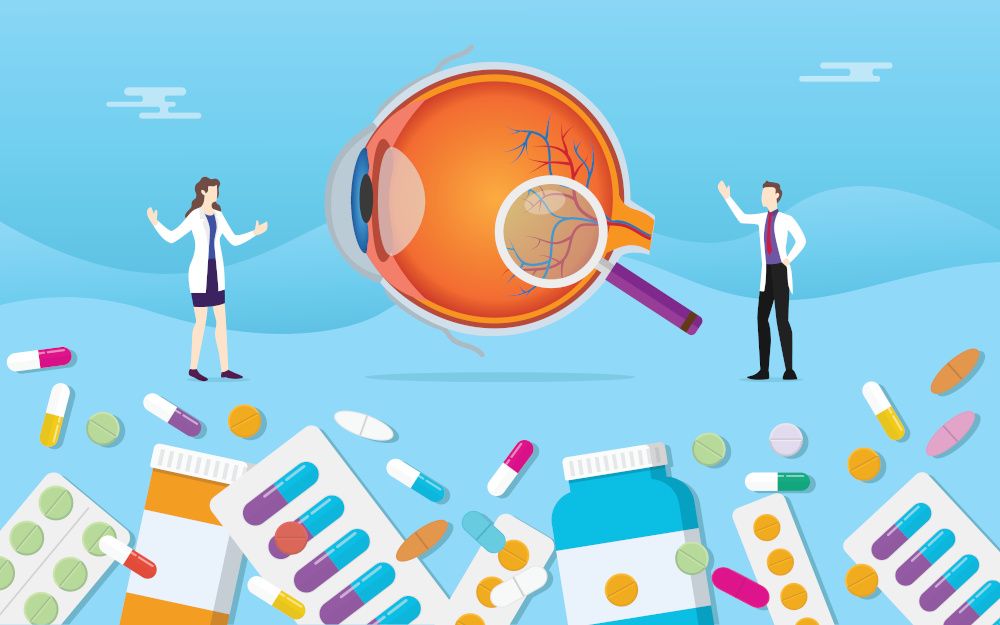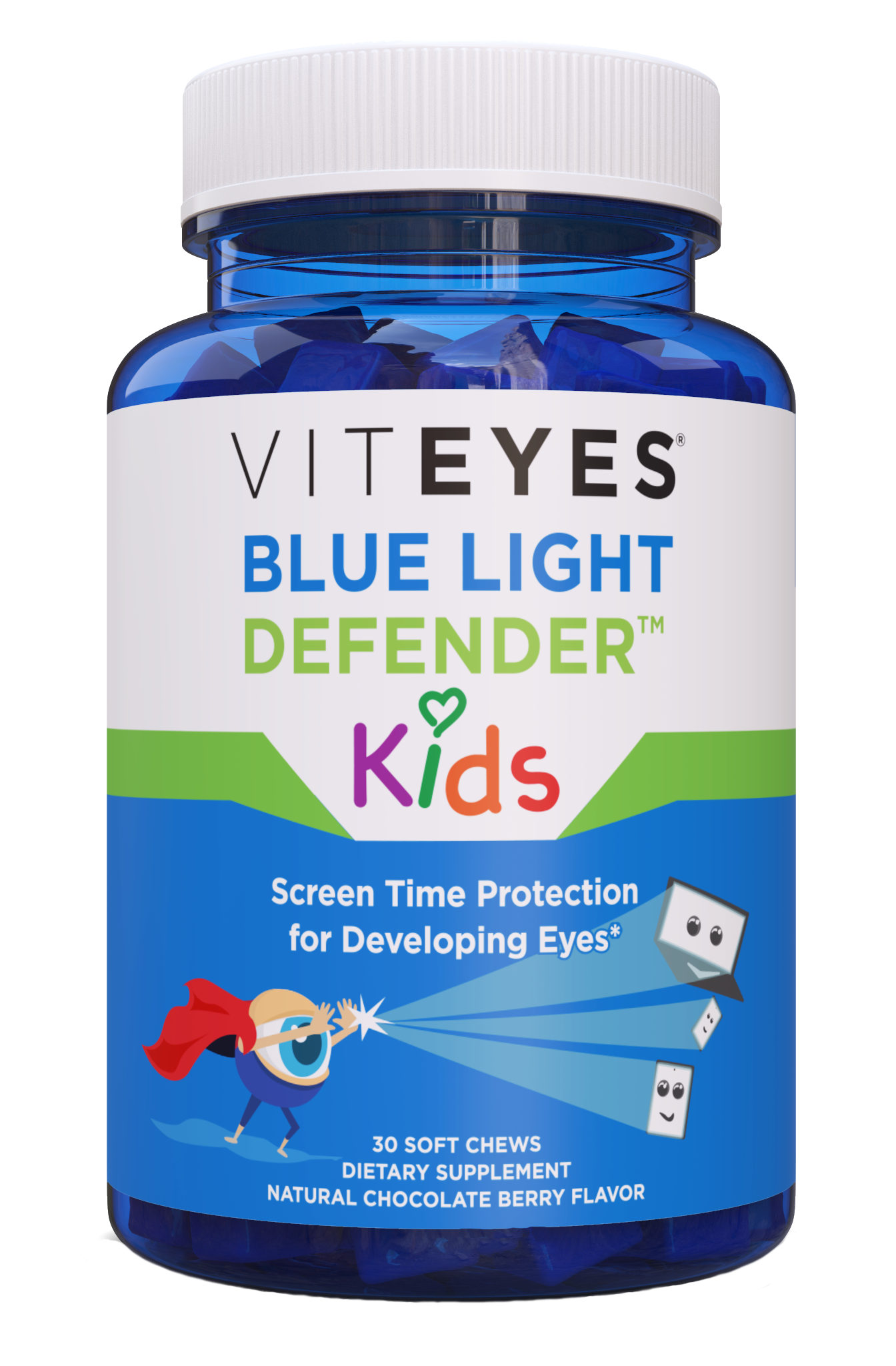Could eye health supplements gain a growing audience thanks to skyrocketing screen time?
A look at some of the eye-health ingredients, and the studies demonstrating their efficacy, that can continue to support customers long after the pandemic is behind us.
Photo © AdobeStock.com/maslakhatul

If increased screen time was a concern prior to the COVID-19 pandemic, the pandemic shot that concern straight into the stratosphere. This goes for both adults and kids, who are now sitting in front of their screens for the better part of their day working, online learning, or relying even more heavily on digital devices for entertainment in lieu of going out. Thanks to the pandemic, consumers have become all the more aware of just how difficult it is to escape the blue light they’ve heard so much about in the news—and it’s putting eye health at top of mind in ways never seen before.
Surveys say the same. One July 2020 poll conducted by Ipsos on behalf of eye-care brand Alcon found that more than half of Americans are spending more time in front of a smartphone, television, or computer screen than they were prior to the pandemic. The poll, which surveyed 1,005 Americans over the age of 18, also found that 60% of consumers are concerned about the impact of more screen time on their eye health.1
Even with COVID-19 vaccines on the horizon and in reaching distance for some, those who make and sell eye health products, including dietary supplements, are asking the question about whether an increased demand for eye health products is here to stay even after the pandemic is gone. After all, once consumers gain awareness of the dangers of blue light exposure, can they really put that knowledge back in the bottle?
While it remains to be seen whether demand holds true in 2021, in this article we take a look at some of the eye-health ingredients, and the studies demonstrating their efficacy, that can continue to support customers long after the pandemic is behind us.
Capsanthin Trends for Intraocular Pressure
Carotenoids like lutein and zeaxanthin have led the eye-health nutrient category, and now another carotenoid, capsanthin, is likewise proving to be both popular and effective.
Capsanthin offers its own complementary benefits for eye health. Sevanti Mehta, president of capsanthin supplier Unibar Corp. (Houston, TX), explains that excessive eye pressure can contribute to eye fatigue, eye strain, and possible optical nerve damage, which is why ingredients like capsanthin that reduce intraocular pressure could see significant growth in the eye health category.
“Eye health supplements so far have mainly explored macular pigment optical density (MPOD) support, especially in its connection to blue light protection, but research has found that this alone may not be sufficient for comprehensive vision health,” says Mehta. “Addressing excessive eye pressure is a must in order to lower the risk of eye fatigue, eye strain, and potential optical nerve damage.”
Unibar’s branded CapsiClear capsanthin ingredient, standardized to 50% capsanthin concentration, has been shown in studies to reduce intraocular pressure and mitigate the risk of nerve damage, Mehta says. The company continues to evaluate CapsiClear’s potential role in eye health through ongoing study.
One recent animal study, which has not yet been published in a peer-reviewed journal, found that 20, 40, and 80 mg/kg of CapsiClear per day reduced intraocular pressure in rats after 28 days. Another unpublished study, a 12-week randomized, placebo-controlled clinical trial involving 21 human participants, found that 40 mg of CapsiClear per day could increase macular pigment density. Unibar cautions that this pilot study lacked a sufficiently large sample size to reach statistical significance, meaning more research is needed.
Mehta says Unibar is continuing to evaluate CapsiClear’s benefits and investigate the range of potential roles capsanthin may play in maintaining ocular health.
Lutein Protects Against Blue Light Exposure
OmniActive Health Technologies (Morristown, NJ), a long-time player in the eye health category, is well attuned to consumers’ increasing focus on blue light these days. Brian Appell, director of global communications for OmniActive, says consumers are now using digital devices for work, school, entertainment, and social connection, estimating that American adults now spend about half their time in front of a digital device. The modern shopper of eye health products, he says, is very receptive to the idea of taking eye health supplements that can protect against damaging blue light.
“As consumers become more educated on the sources and potential consequences of blue light exposure, their intent to purchase almost doubles,” Appell says. “There’s an opportunity for [products that] defend against prolonged exposure.”
Macular carotenoids like lutein can serve as this first line of defense given their favorable performance in clinical trials. One such study, a randomized, double-blind, placebo-controlled trial, assessed the effects of OmniActive’s branded Lutemax 2020 ingredient, a blend of lutein, zeaxanthin, and mesozeaxanthin, on various blue light exposure metrics. This study examined the effect of Lutemax 2020 on sleep quality, MPOD, temporal vision, and physical indicators of excessive screen time like headaches, neck strain, blurry vision, and eye fatigue. The trial involved healthy non-smokers aged 18 to 25 with a BMI under 27 who typically spend at least six hours per day in front of a television, computer, tablet, or smartphone screen. Participants were randomly assigned to receive either 24 mg of Lutemax 2020 per day, or a matching placebo, for six months.
Participants were assessed for MPOD, sleep quality, temporal vision, and physical indicators of excessive screen time at baseline and after three and six months. After three months, the Lutemax 2020 group saw statistically significant improvements in sleep quality and in temporal vision as measured by the Critical Flicker-Fusion Frequency test. After six months, the Lutemax 2020 group reported statistically significant improvements in MPOD, contrast sensitivity, disability glare, photostress recovery time, headache frequency, eye strain, and eye fatigue.2
“This study, along with prior research on Lutemax 2020,” says Appell, “demonstrates a direct link between supplementation with macular carotenoids and defense against prolonged blue light exposure. This was the first study in young, healthy adults to demonstrate how macular carotenoids support visual function, reduce the symptoms of prolonged screen time, and improve sleep quality.”
Saffron Extract Preserves Retinal Function
Saffron extract (Crocus sativus L.) is quickly becoming a popular tool for preventing blue light damage. Julia Diaz, head of marketing for Pharmactive Biotech Products (Madrid), says the COVID-19 pandemic has coincided with increased demand for Pharmactive’s branded, fast-absorbing saffron ingredient, affronEYE.
Diaz says consumers are beginning to understand saffron’s eye health support properties, particularly as more studies reveal its mechanism of action. “Last year, we conducted and published an in vivo study demonstrating affronEYE’s effect on preventing glaucoma development, which we plan to investigate further in another clinical study,” Diaz explains. “We anticipate there will be significant interest in the area of eye protection moving forward, including finding protective solutions against sun damage and pollution.”
The aforementioned study examined the effects of a daily 60 mg/kg dose of affronEYE on symptoms of laser-induced ocular hypertension, a risk factor for and precursor to glaucoma, in male Swiss albino mice. The mice were divided into six groups, including two control groups. The first control group was not exposed to the lasers and did not receive affronEYE (n=6), while the second control group received affronEYE but was not exposed to the lasers (n=8). The first experimental group (n=8) was exposed to the lasers, did not receive affronEYE, and was analyzed after three days. The second experimental group (n=6) was exposed to the lasers, did not receive affronEYE, and was analyzed after seven days. The third experimental group (n=8) was exposed to the lasers, received affronEYE, and was analyzed after three days. The final experimental group (n=6) was exposed to the laser, received affronEYE, and was analyzed after seven days. The mice were evaluated daily for intraocular pressure, retinal ganglion cell damage, and inflammation as measured by retinal microglia concentration.
After seven days, the mice in the laser group that received the saffron extract scored lower on measures of ocular hypertension relative to the mice that did not receive saffron extract. Saffron extract consumption was also associated with less cell damage and lower levels of neuroinflammation. The study authors concluded that saffron extract prevented retinal ganglion cell death, decreased retinal microglial activity, and showed anti-inflammatory and neuroprotective effects.3
Diaz says Pharmactive has other clinical studies underway that will examine the benefits of other eye health ingredients. For now, affronEYE is set to gain popularity among particular demographics at greater risk of eye health problems, including thanks to COVID-19.
“Working from home, and online schooling, have been the largest contributors to increases in screen time,” she says. “Younger generations, notably gamers, are particularly vulnerable to the negative impacts of blue light exposure. Over the past few months, we’ve noticed an increase in demand for affronEYE coinciding with the COVID-19 pandemic.”
Eyes Forward
Prior to the start of the COVID-19 pandemic, the global eye health ingredients market was already predicted to grow at a 6.2% CAGR from 2019 to 2025, according to Zion Market Research.4 Whether growth is even higher post-COVID remains to be seen. But chances are good. Brands that can offer eye health ingredients with proven efficacy will find significant market opportunities in 2021 and beyond.
Sidebars:
VR Headsets Present a New Challenge
Market research firm Omdia expects the global virtual reality (VR) headset market to be worth $10 billion by 20255, and this growth is giving optometrists pause.6 While there are few studies on the potential long-term effects of prolonged VR headset use, short-term use is known to cause eyestrain.7 As VR headset use grows, and as awareness of adverse eye impacts grows, this could send more consumers out to seek eye health solutions.
Children’s Eye Health an Emerging Market
As distance learning becomes the new reality, the market for children’s eye health products is growing. Brands like VitEyes, for instance, are now offering eye health ingredients and blue light glasses for children.
Photo from VitEyes

VitEyes Blue Light Defender Kids product is a soft chew containing 5 mg of lutein and 1 mg of zeaxanthin that comes in a kid-friendly chocolate berry flavor. With children’s screen time becoming a more prominent concern among parents, expect the kids’ eye health market to grow.
References
1. Sesetyan T et al. “Screen time across several devices has increased for many Americans during the COVID-19 pandemic.” Ipsos website. Published online July 21, 2020. Accessed here.
2. Stringham JM et al. “Macular carotenoid supplementation improves visual performance, sleep quality, and adverse physical symptoms in those with high screen time exposure.” Foods, vol. 6, no. 7 (July 2017): 47-60
3. Fernández-Albarral JA et al. “Neuroprotective and anti-inflammatory effects of a hydrophilic saffron extract in a model of glaucoma.” International Journal of Molecular Sciences, vol. 20, no. 17 (September 2019): 4110
4. Zion Market Research. “Eye Health Ingredients Market by Source (Natural and Synthetic), by Ingredient (Lutein, Zeaxanthin, Beta Carotene, Vitamin A, Bilberry Extracts, and others), by Form (Soft Gel, Capsule, & Tablets, Liquid, and Powder), by Application (Human and Animal), and by Disease Indication (Age-Related Macular Degeneration, Cataract, Dry Eye Syndrome, and Others): Global Industry Perspective, Comprehensive Analysis, and Forecast, 2018-2025.” Published September 23, 2019. Accessed here.
5. Jijiashvili G. “Consumer VR headset and content revenue forecast: 2020-25.” Omdia. Published online November 26, 2020.
6. “Are virtual reality headsets dangerous for our eyes?” Canadian Association of Optometrists. Published online May 19, 2017.
7. Mukamal R. “Are virtual reality headsets safe for eyes?” American Academy of Ophthalmology. Published online February 28, 2017.